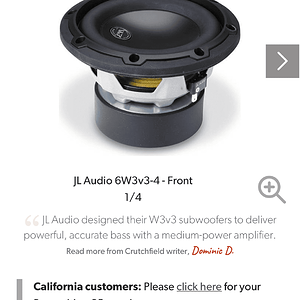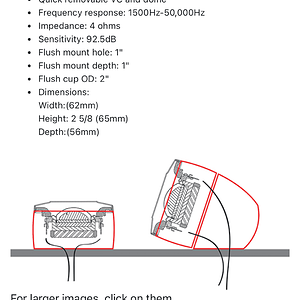IMO.. this is a fantastic topic to discuss. I'll try to provide my limited knowledge. First, time alignment will not necessarily correct all phase issues. Let's say you have a couple of speakers (say tweeter and woofer from one side, or one woofer and subwoofer) and a phase shift is introduced by a crossover network. Let's say all frequencies are now 90 degrees out of phase between the speakers. You can't always put ALL frequencies back in phase by the means of time alignment alone. This is because different frequencies have different wave lengths. So, a 90 degree shift means different wave lengths at different frequencies. You cannot apply time delay to one frequency but not another. TA is applied to the entire frequency spectrum. However, this does not seem to be such a big limitation for time alignment. Let's say you're time aligning a woofer with a subwoofer. These two speakers play equally loud only in a very narrow band of frequencies, and therefore TA is still useful for putting these two speakers roughly in phase just for the frequencies where they interact, since we don't care if two speakers are out of phase at the frequencies where they don't interact with each other (extreme case.. your tweeter out of phase with subwoofer, do you care?). One conclusion from this discussion is that if you want to avoid phase alignment issues, try to avoid using shallow slopes. If you use shallow slopes, then the range of frequencies where two speakers can interact with each other will be wider. If I get bored enough, I'll throw together a few graphs to show what I mean.
Note that this "limitation" does not apply to a situation where the acoustic phase shift is introduced by mechanically moving away the drivers. In this case, TA can correct phase issues in the entire spectrum, in theory.
So I've been reading up on phase and T/A, and while the basic theory seems pretty simple, as I dug further it appears to be much more complicated than I imagined, and it's only an small part of acoustics!I do have a question, which should be simple to answer hopefully.
If you have your standard two-way front set up, and lets say each sides tweeter and mid are out of mechanical phase, let's say the tweeter on the left was wired "backwards", and the mid on the right was as well. So now the left tweet is in mechanical phase with the right mid, as are the right tweet and left mid.
For simplicity, let's not worry about xovers.
Just to be a little pedantic here.. there is electrical phase and mechanical phase. I would prefer to call the later, the acoustic phase. When you swap negative and positive wire connections, you alter the electrical phase, and this also affects the acoustics phase. But, if you move the tweeter away from the woofer, then you affect the acoustic phase, but not electrical phase.
Would proper time alignment effectively "fix" the problem and correct the phasing issue?
I guess basically, does T/A negate the need for all speakers to be in mechanical phase? If not, why not?
Seems to me it would, but I couldn't find anything in my searches that would show otherwise, or maybe I'm not understanding fully.
Also, I know tweets usually have the phase flipped to the mids, but why is it referred to that way?
Are they?
Why not flip the phase on the mid instead?
I think flipping the phase of the mid was an old school way of getting better imaging without time alignment. Normally you expect the left and right woofer to be in electrical phase. However, in a car environment the sound waves are not in acoustic phase. This is because the distances between you and woofers are different. When you couldn't change time alignment, you could flip the phase of one of the woofers. This would hopefully put the frequencies that are critical to imaging in better acoustic phase than they used to be. However, this way the bass frequencies will now definitely be out of phase. This is because the wave lengths at bass frequencies are very long. For example, at 80Hz the wave lenth is what ~4 meters long? This means that the fact that the left speaker is a few inches closer to your head than the right speaker, does not really affect the phase in an audible way to those frequencies. However, if you flip the phase of the woofer, you will definitely introduce a phase shift at this frequency that's very close to 180 degrees. Suddenly, the bass from left and right speakers nearly cancels each other. So this was often exploited in SQ installs this way.. the mids are phase flipped to keep the midrange closer to being in phase for better imaging. Since this affects bass, you effectively need another set of woofers just for playing bass. Now, whether flipping the phase of woofer and tweeter makes any audible difference at all will depend on the crossover frequency and the crossover slopes. If the crossover frequency between tweeter and woofer is high enough, then the wave lengths at those frequencies may be so short that the acoustic phase can not be effectively heard by ear. (e.g. there is no point to align frequencies with wave length so short that they will be out of acoustic phase again if you move your seat forward by 1 inch or turn your head). On the other hand, if the crossover frequency between woofer and tweeter is low enough or if the slopes are shallow, then flipping the phase of tweeters may affect what you hear.


